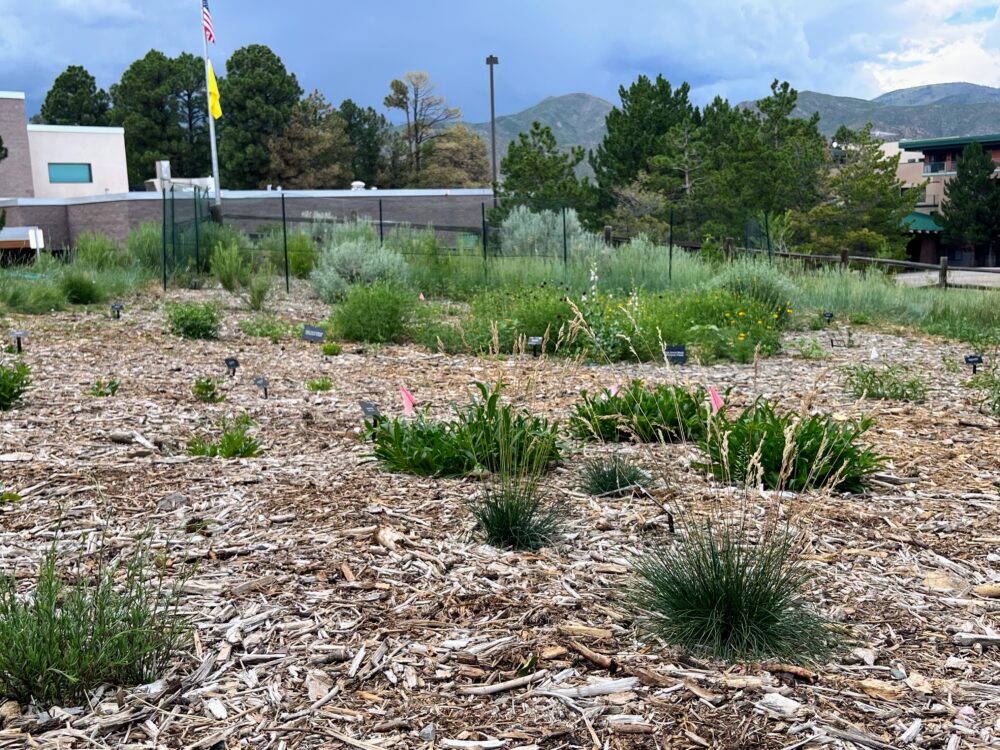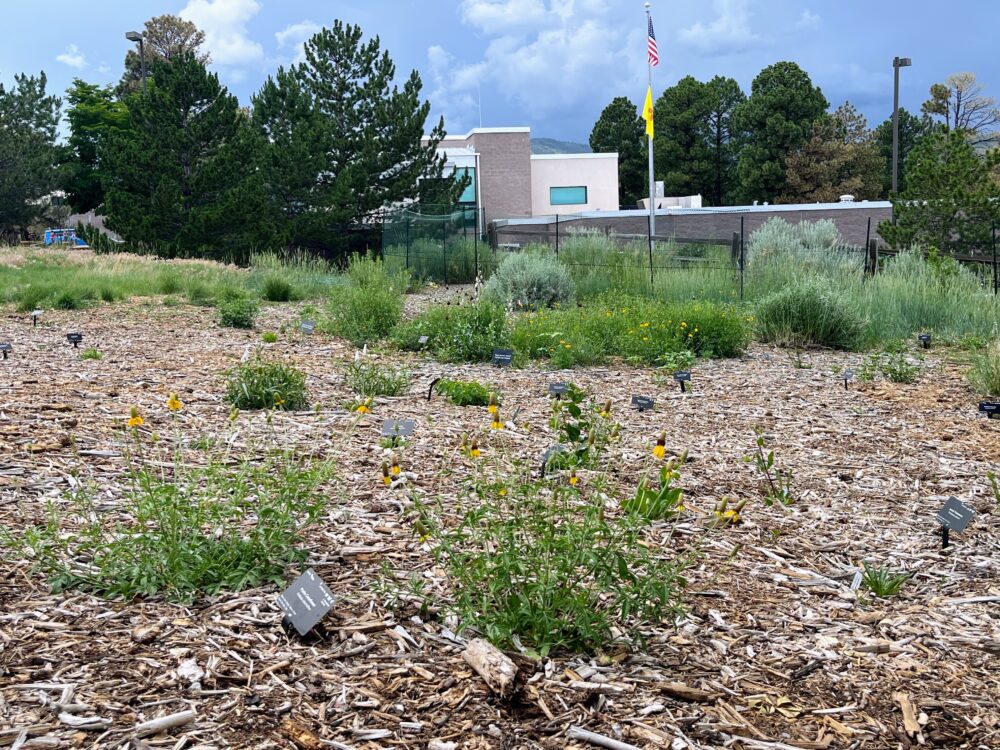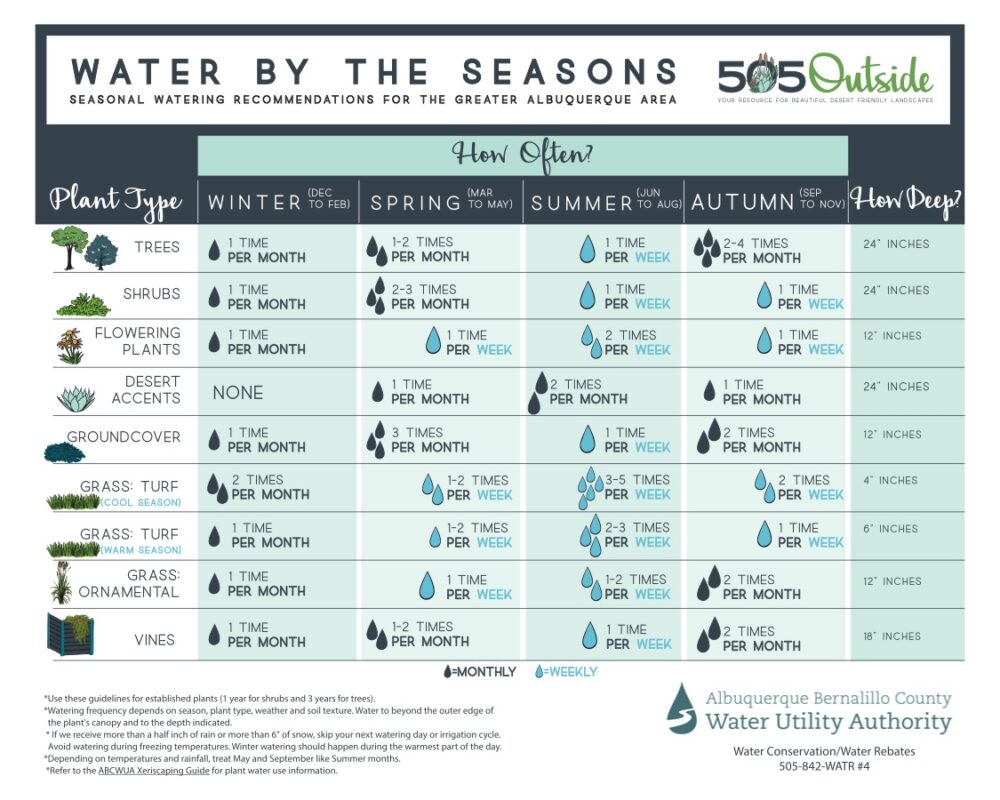There are many challenges to native gardening here in northern New Mexico, but there’s one addition to starting your garden that is an absolute necessity: water!
It is appealing and rewarding to seek out native pollinator plants with the intention of reducing residential water usage, and established local native plants do, in fact, need less water than plants adapted to wetter climates. Plants found in arid areas utilize deep roots to reach moisture, and they evolved to have fleshy organs like leaves, roots, or stems for water storage or waxy coatings on their leaves to reduce water loss. It may seem like these adaptations mean gardeners can sit back and relax, content that their native plants will take care of themselves– except this sort of confidence can backfire, especially when establishing a native garden.
While there are many wild areas in which native plants thrive, actively transplanting them to a yard or garden that has spent years as a lawn, patch of dirt, under weed barrier and gravel, or otherwise been neglected in an urban environment will likely not provide the appropriate conditions for those plants to become established and flourish without extra care and maintenance. Wild areas with successful native plants experience natural leaf and pine needle mulch and local animal manure fertilizer on a regular basis. Weeds, including ever-present bindweed, are much less prevalent in wild areas, which means soils may be better balanced with nutrients critical for native plants to be successful. Natural snow-melt runoff can provide deep watering in the spring and early summer–watering that might not occur in an urban area with poor soil drainage, causing runoff to gush into storm drains or pool in compacted areas instead.
In a plot where planting native plants is a new endeavor, soil amendments can help, and natural, untreated mulch will assist further as both a barrier to weeds and a method to help soil moisture retention. However, without water, even native plants will fail to survive.
When starting a native pollinator garden, regular, consistent watering is absolutely necessary for plants to develop robust root systems. After hardening-off recently acquired plants, be sure to transplant them when their roots, and the soil they are moving into, are moist. Once planted, check your plants daily to see how they are doing. A basic soil moisture monitor, available from most hardware stores, is a good way to determine when to water and to avoid over- or under-watering. Watering every other day is not unusual, especially during the hottest times of the season, but see what your monitor says. Even the hardiest plants need to do the work to become established, and for our native varieties, that can take up to 2 or 3 years of regular (2 times per week), slow and deep watering. Root systems that support drought-tolerant plants extend into the soil far beyond the first few inches, and taking care to ensure root success will help flowering plants become the rich pollen and nectar resources pollinators depend on.


An often underestimated part of successful gardening is watching the weather–especially when precipitation levels are lower or temperatures higher than past annual averages. It then becomes especially important for gardeners to pay attention and provide assistance to new, native gardens, providing extra watering in times of drought. Established drought-tolerant plants can indeed survive periods of drier, hotter weather, but if they haven’t had the chance to develop those drought-tolerant root systems–to become established, in other words–they will not live up to their potential in your garden. They may not even live through the season!
Deep, regular watering can make all the difference in creating the long-lasting beauty and forage-rich habitat our local wildlife and pollinators love and depend on. There’s nothing quite like enjoying the purple blooms of Bee Plant and red-flowered stalks of Firecracker Penstemon in the summer. Hearing the deep buzz of bumble bees or the trill of hummingbirds swooping by makes the delight of native gardens all that more special.
Listen to your plants, water when they’re thirsty, and the blooms (and deep roots) will come!

Text and photo by Britton Donharl
Selected Resources
https://www.npsnm.org/gardening-with-native-plants
https://www.wildflower.org/expert/show.php?id=10191&frontpage=true
https://www.westtexasgardening.org/post/how-to-water-native-plants
https://www.sfemg.org/learn-more-about-native-plants
https://seattlelandscapes.com/do-you-need-to-water-native-plants/
